Obiettivo
Lithography based additive manufacturing technologies (L-AMT) are capable of fabricating parts with excellent surface quality, good feature resolution and precision. ToMax aims at developing integrated lithography-based additive manufacturing systems for the fabrication of ceramic parts with high shape complexity. The focus of the project is to unite industrial know-how in the field of software development, photopolymers and ceramics, high-performance light-sources, system integration, life cycle analysis, industrial exploitation and rewarding end-user cases.
The consortium will provide 3D-printers with high throughput and outstanding materials and energy efficiency. The project is clearly industrially driven, with 8 out of 10 partner being SMEs or industry.
Targeted end-use applications include ceramics for aerospace engineering, medical devices and energy efficient lighting applications. The consortium is aiming to exploit disruptive applications of L-AMT by developing process chains beyond the current state of the art, with the dedicated goal to provide manufacturing technologies for European Factories of the Future.
By relying on L-AMT, ToMax the following objectives are targeted:
(1) ToMax will provide methods which are 75% more material efficient with respect to traditional manufacturing
(2) Are 25% more material efficient with respect to current AMT approaches by using computational modelling to optimize geometries and by providing recyclable wash-away supports.
(3) ToMax will provide methods which are 35% more energy efficient that current AMT approaches by developing 50% faster thermal processing procedures.
(4) Incorporate recycling for the first time in L-AMT of engineering ceramics
Overall, the consortium will provide innovative, resource efficient manufacturing processes. ToMax will develop energy-efficient machinery and processes, with a focus on manufacturing of alumina, silicon nitride and cermet parts with high shape complexity.
Campo scientifico (EuroSciVoc)
CORDIS classifica i progetti con EuroSciVoc, una tassonomia multilingue dei campi scientifici, attraverso un processo semi-automatico basato su tecniche NLP. Cfr.: Il Vocabolario Scientifico Europeo.
CORDIS classifica i progetti con EuroSciVoc, una tassonomia multilingue dei campi scientifici, attraverso un processo semi-automatico basato su tecniche NLP. Cfr.: Il Vocabolario Scientifico Europeo.
- ingegneria e tecnologia ingegneria ambientale gestione basata sugli ecosistemi mitigazione dei cambiamenti climatici
- ingegneria e tecnologia ingegneria meccanica ingegneria dei veicoli ingegneria aerospaziale
- scienze naturali scienze chimiche chimica inorganica metalloidi
- ingegneria e tecnologia ingegneria meccanica ingegnerizzazione dei prodotti produzione additiva
- ingegneria e tecnologia ingegneria dei materiali ceramica
È necessario effettuare l’accesso o registrarsi per utilizzare questa funzione
Siamo spiacenti… si è verificato un errore inatteso durante l’esecuzione.
È necessario essere autenticati. La sessione potrebbe essere scaduta.
Grazie per il tuo feedback. Riceverai presto un'e-mail di conferma dell'invio. Se hai scelto di ricevere una notifica sullo stato della segnalazione, sarai contattato anche quando lo stato della segnalazione cambierà.
Programma(i)
Programmi di finanziamento pluriennali che definiscono le priorità dell’UE in materia di ricerca e innovazione.
Programmi di finanziamento pluriennali che definiscono le priorità dell’UE in materia di ricerca e innovazione.
-
H2020-EU.2.1.5. - INDUSTRIAL LEADERSHIP - Leadership in enabling and industrial technologies - Advanced manufacturing and processing
PROGRAMMA PRINCIPALE
Vedi tutti i progetti finanziati nell’ambito di questo programma -
H2020-EU.2.1.5.1. - Technologies for Factories of the Future
Vedi tutti i progetti finanziati nell’ambito di questo programma
Argomento(i)
Gli inviti a presentare proposte sono suddivisi per argomenti. Un argomento definisce un’area o un tema specifico per il quale i candidati possono presentare proposte. La descrizione di un argomento comprende il suo ambito specifico e l’impatto previsto del progetto finanziato.
Gli inviti a presentare proposte sono suddivisi per argomenti. Un argomento definisce un’area o un tema specifico per il quale i candidati possono presentare proposte. La descrizione di un argomento comprende il suo ambito specifico e l’impatto previsto del progetto finanziato.
Meccanismo di finanziamento
Meccanismo di finanziamento (o «Tipo di azione») all’interno di un programma con caratteristiche comuni. Specifica: l’ambito di ciò che viene finanziato; il tasso di rimborso; i criteri di valutazione specifici per qualificarsi per il finanziamento; l’uso di forme semplificate di costi come gli importi forfettari.
Meccanismo di finanziamento (o «Tipo di azione») all’interno di un programma con caratteristiche comuni. Specifica: l’ambito di ciò che viene finanziato; il tasso di rimborso; i criteri di valutazione specifici per qualificarsi per il finanziamento; l’uso di forme semplificate di costi come gli importi forfettari.
RIA - Research and Innovation action
Vedi tutti i progetti finanziati nell’ambito di questo schema di finanziamento
Invito a presentare proposte
Procedura per invitare i candidati a presentare proposte di progetti, con l’obiettivo di ricevere finanziamenti dall’UE.
Procedura per invitare i candidati a presentare proposte di progetti, con l’obiettivo di ricevere finanziamenti dall’UE.
(si apre in una nuova finestra) H2020-FoF-2014-2015
Vedi tutti i progetti finanziati nell’ambito del bandoCoordinatore
Contributo finanziario netto dell’UE. La somma di denaro che il partecipante riceve, decurtata dal contributo dell’UE alla terza parte collegata. Tiene conto della distribuzione del contributo finanziario dell’UE tra i beneficiari diretti del progetto e altri tipi di partecipanti, come i partecipanti terzi.
1040 Wien
Austria
I costi totali sostenuti dall’organizzazione per partecipare al progetto, compresi i costi diretti e indiretti. Questo importo è un sottoinsieme del bilancio complessivo del progetto.


